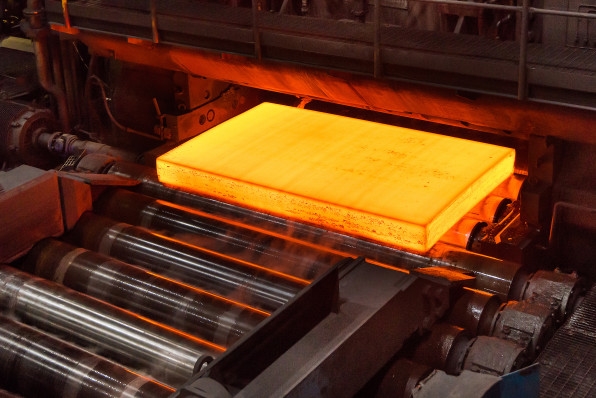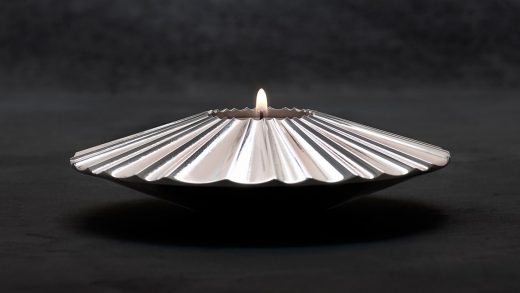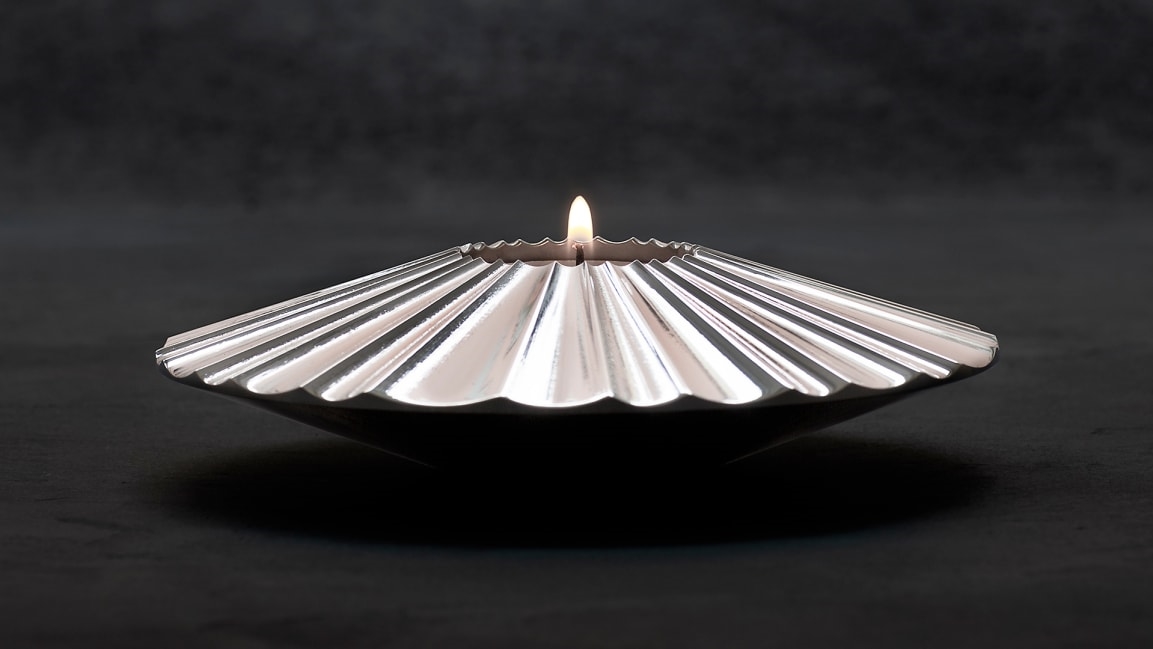Steel is killing the planet. This company uses an electric oven to slash its emissions
Examine the frame of your electric car, or the skeleton of your LEED-certified green building, and you’ll see coal. Not literal coal, mind you. You’ll see steel components that rely on dirty coal to be made. Steel’s reliance on coal for production is a big reason why steel alone is responsible for 8% of global CO2 emissions.
Nothing we build with steel can be all that positive for the environment until we cut coal out of its production process. And now, for the first time, we have a steel that does just that. The Swedish steel company SSAB has partnered with the mining company LKAB and the Swedish government to create a new, greener steel-production process. And they partnered with designer Lena Bergström to create the first object that’s been made from steel requiring no fossil fuels. The object? A candle holder, which “symbolizes the light at the end of the tunnel,” according to Bergström.
The candle holder isn’t for sale, but it does help ground a lot of esoteric production processes into a symbol that anyone can understand. And that tiny project is just the beginning: Volvo is among the industrial partners looking to use the new steel for its cars.
Backing up a bit, steel is the material of our era. It’s a human-made material we call an alloy. This alloy starts with the element iron, and mixes in just a sprinkling of carbon (which represents a mere 2% of steel’s composition by weight). That 2% makes all the difference, however. Steel is harder, stronger, and far more rust resistant than iron. Since it’s made out of abundant, natural elements, steel’s production has been around since its creation in ancient China (circa 403 to 221 BC). But it wasn’t until 1860 when we figured out how to mass produce steel that it left a mark on our world: in railroads, skyscrapers, cars, refrigerators, and all sorts of other durable objects.

The production process behind steel has barely changed in over a century. We source the iron from iron ore. And the carbon is sourced from coal. We could get the carbon from nearly anything in nature, but coal serves an important one-two punch. First, the coal heats up a blast furnace to melt the iron ore into the molten metal. For the ore to become pure iron, however, it needs to get rid of its oxygen. That’s where the second function of coal comes in. When the iron ore is molten and releases its oxygen, coal’s carbon binds with that oxygen to purify the iron, and it also mixes into the pure iron to make steel.
It’s an elegant process—coal is a fuel, purifier, and ingredient—but the problem is that when oxygen and carbon meet, they create CO2. And that’s why producing steel in this way is so harmful for the environment.
The new steel process that’s currently being scaled to mass production in Sweden is dubbed HYBRIT (Hydrogen Breakthrough Ironmaking Technology). This process uses an electric oven instead of a coal blast furnace, and hydrogen takes the place of coal’s carbon to capture the oxygen in the iron ore. As anyone knows, when hydrogen and oxygen meet, they make H20 (aka water) instead of dirty CO2. So, much like a hydrogen car, HYBRIT steel production emits clean water vapor.
Now, HYBRIT steel still takes a lot of energy to produce, and it would go too far as to oversimplify any steel as “green.” According to one estimate, HYBRIT steel emissions should be about 20% lower than traditional steel that’s made with coal. We shouldn’t be burning coal for anything but pizza ovens at this point—and we may have too many of those, too.
Which brings us back to the candle holder. Yes, it’s just a candle holder. But given that our modern society is built upon steel itself, it really is a hopeful symbol. It’s physical proof that we can do better.
(39)



